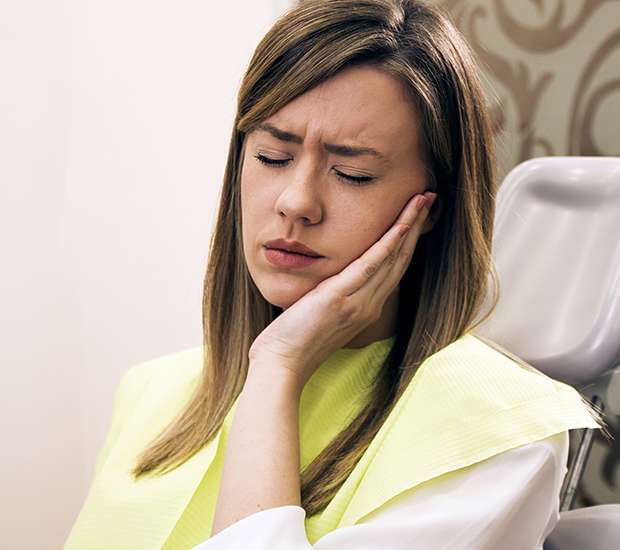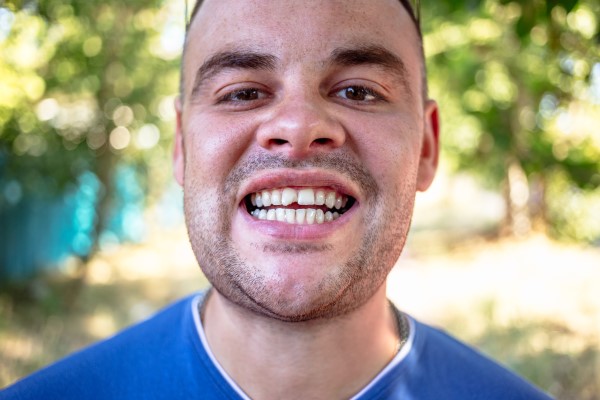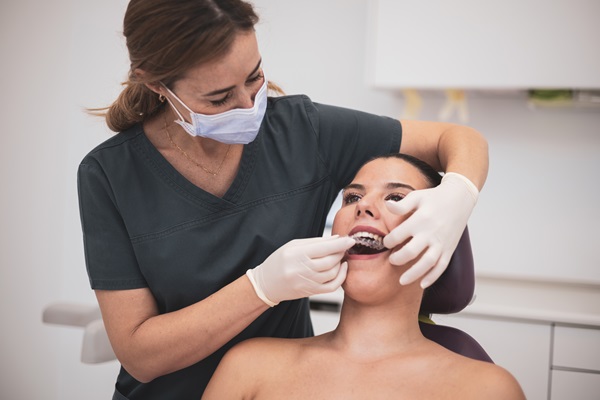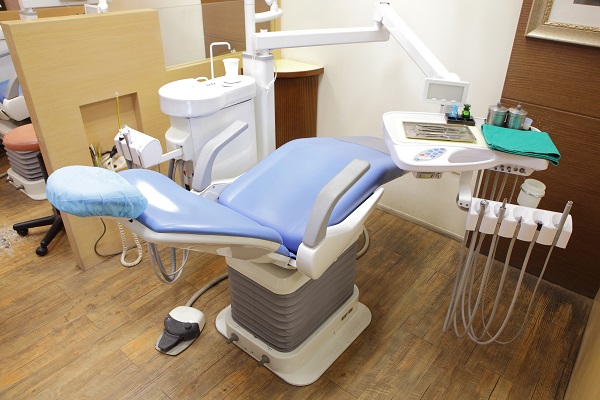TMJ Dentist New York, NY
Are you looking for a TMJ dentist in New York? If so, we invite you to schedule a consultation with our dental office by calling (917) 284-9680. We are located in New York and treat patients throughout the New York area. During your first appointment, we will conduct a gentle examination and ask questions in order to understand the full extent of your symptoms and how they are impacting you on a daily basis. It is critical that you see a dentist that appreciates the nature of TMJ and the need for caution during dental care. Otherwise, you could further irritate your jaw and muscles, leading to further discomfort.
Temporomandibular joint (TMJ) syndrome
Also called temporomandibular disorder (TMD)
TMD is a condition that causes much pain and it relates to your bite, the positioning of your jaw, and the muscles that move your jaw. It can be caused by grinding and clenching your teeth over a long enough time period, or by an injury, or by a defective bite.
Traditional dentistry works on our teeth and gums. A neuromuscular dentist does this too, but also works on the nerves and muscles connected to our teeth. These nerves and muscles are also connected to other parts of our head, face, and neck. So pain in one place can be transmitted to a wider area because another branch of the same nerve is involved.
When your muscles move the jaw inappropriately, many symptoms can result, such as:
- Facial pain
- Loose teeth
- Receding gums
- Crowded teeth
- Difficulty with swallowing
- Headaches, often migraines
- Shoulder, neck, and back pain
- Ringing or congestion in the ears
- Pain and sensitivity in your teeth
- Numbness in your arms and fingers
- Clenching or grinding of your teeth
- Pain, clicking and popping in joints
- Chipped, cracked or worn teeth or fillings
TMD can chronically destroy one or both joints culminating into dire and debilitating situations that can impair your lifestyle partially or completely permanently.
Understanding TMJ
Temporomandibular joint and muscle disorders (TMJ disorders) are fairly common and can manifest in various ways. There are two temporomandibular joints in your body – one on each side of your head, located in front of your ears. TMJ, as a condition, develops when there is a problem with these joints as they connect the jawbone to the skull, or there are problems with the muscles responsible for chewing. As a TMJ dentist, we find that many people suffer from the condition without knowing that they have it and are, therefore, unable to seek treatment. As a result, we recommend that if you notice any of the symptoms, you call our office at 917-284-9680 to schedule an examination to ascertain whether you do indeed have TMJ.
Symptoms of TMJ
TMJ disorder will often manifest itself in ways that appear to be unconnected to the jaw. This may include severe headaches or ear, neck, and face pain. While many people attribute these symptoms to stress or issues with their spine, they are often a result of this condition and can be easily rectified. Other more obvious symptoms include difficulty chewing or biting down, a popping or clicking sound when opening and closing the jaw, and jaw pain. In some cases, TMJ becomes so bad that a person can't even open their mouth. This is the extreme, and there are almost always signs along the way. By the time people reach this point they have typically been experiencing discomfort in the mornings or throughout the day, difficulty chewing and a lack of mobility with their jaw in general. As a TMJ dentist, we treat patients that have this condition and recommend coming in at the first sign of irritation so that you can begin treatment before it becomes severe.
Causes of TMJ
There are several causes of TMJ with many theories yet to be proven. Some claim that posture can be responsible for TMJ as can poor diet, a lack of sleep, and the cartilage disk found at the joint itself. As a TMJ dentist, we find that one of the most common causes of TMJ is clenching or grinding teeth at night. During times of high-stress, many people fail to have a restful nights sleep and take out their frustration by inadvertently clenching their jaw closed or grinding down their teeth while sleeping. This can manifest very early in life, with children even being impacted by teeth grinding. When this takes place, the muscles and joints are forced to remain in a tense position, leading to pain in the joints and muscles the following morning. If this happens only occasionally, you may have a minor headache and feel better the next day. If, however, this is occurring on a nightly basis, TMJ symptoms can begin to manifest and you will begin to feel less and less comfortable. You may want to pay particular attention to whether or not you have a headache or jaw pain after having a stressful day at work or being upset about something. If there is no correlation and the pain is consistent, you should seek treatment immediately by calling (917) 284-9680. Alternatively, if your discomfort it only now and then, you can bring up your concerns at your next dental examination in our office - as long as it is within the next several months.
If you have TMJ
Our first goal will be to find the position of the jaw where your muscles are relaxed. To do that we first use a Myo-Monitor. This is a device that sends mild low frequency electrical impulses to the muscles, which relaxes them. When muscles are relaxed, blood flow in the area increase, which in turn increases the flushing out of toxins, restoring health to the head and neck and ultimately the bite and dentition. After about 45 minutes of muscle treatment, your jaw will be truly relaxed, and at that point we can use our diagnostic equipment to record its position. Our computerized scanning unit, K7 creates a 3-D diagram, from which we can make a model of your teeth and jaws in their relaxed position.
Then we can make an orthotic:
An orthotic is a device that provides support for weakened or ineffective joints or muscles. For instance, some people wear orthotics in their shoes, to help keep their feet at the best angle as they walk.
This dental orthotic is worn for about 3 months, and it will allow your jaw to close to its relaxed position, rather than to its old habitual tense position. In the relaxed position, the jaw muscles are at an ideal length and will heal without any further spasms. The joint capsules will heal and pain will recede. All of this stabilizes your bite.
After the 3 months are up, you can decide whether to continue wearing an orthotic (a more durable, permanent one), or to have some work done on your teeth, such as:
- Orthodontic treatment
- Replacement of missing teeth
- Crowns and / or veneers on your teeth
These treatments will help optimize your bite and daily functions.
If you’re suffering from recurring headaches, popping sounds in the jaw, facial pain, or difficulty with swallowing, please call or e-mail us today to schedule your initial consultation.
Treatment Options
As a TMJ dentist, we always recommend starting with the least invasive treatment method. It is important to avoid placing any additional stress on your joints so while it may seem tempting to rush into surgical procedures – wait. Start with gently massaging your jaw muscles a couple of times per day. We can show you how to do so without irritating the area or causing a flair up. You may also want to analyze your diet to determine if any particular foods may be too difficult to chew, thereby making the problem worse. At New York DMD, we often find that patients are increasing their jaw problems by regularly eating foods like tough meat and nuts that require more forceful chewing, placing stress on the muscles and jaw. By switching to soft foods or ones that are easily pulled apart, you may start to feel better immediately.
In our TMJ dentist office, we provide a non-invasive solution for helping patients to feel better. Since TMJ is often caused by teeth grinding or clenching, preventing the upper and lower teeth from touching is a fast way to experience relief. In our office, we can make an impression of your teeth and use it to create a custom night guard for you to wear while sleeping. The night guard is made of a clear and comfortable plastic that surrounds your upper and lower teeth, similar to how a full retainer would function. The main difference is that the upper and lower portion attach and by doing so, prevent your teeth from touching and your jaw from clenching. Very often, our patients report feeling better immediately and every night that you sleep without grinding your teeth, you have the opportunity to increase the quality of your rest and wake up feeling energized – a win/win scenario. Since the night guard is small, easily removed and stored, there are no clunky devices to worry about and you can take it with you when traveling.
As a TMJ dentist, we speak with patients that have visited medical providers in New York that have recommended solving the problem surgically. At New York DMD, we invite you to schedule an appointment to have your night guard created so that you can exhaust all options before considering escalating your treatment. Surgery is not something to be taken lightly and should only be performed as a last result. To further discuss our non-invasive solution, call 917-284-9680 to speak with one of our team members today.
TMJ Treatment
Your temporomandibular joint (TMJ) is where your jaw is connected to the temporal bones of your skull, which are in front of each ear allowing full motion of your jaw.
Problems with your jaw and the muscles in your face that control it are known as temporomandibular disorders (TMD).
Dentists believe these disorders are attributable to possible actions or conditions such as grinding, clenching, chewing or arthritis putting a lot of pressure on the joints.
Conservative treatments do not invade the tissues of the face, jaw, or joint, or involve surgery. Reversible treatments do not cause permanent changes in the structure or position of the jaw or teeth. Even when TMD have become persistent, most patients still do not need aggressive types of treatment.
Click to watch testimonial from our TMJ Client Review ~ PhilipThere are many different types of treatments for TMD. If your TMD is not better after trying the basic treatments, other suggestions can include:
Transcutaneous electrical nerve stimulation (TENS) — This therapy uses low-level electrical currents to relax the jaw joint and facial muscles. For some people, this relieves pain.
Ultrasound — Ultrasound treatment is deep heat that is usually applied to the joint if it’s sore or doesn’t move.
Trigger-point injections — For this therapy, a dentist injects pain medicine or an anesthetic into tender facial muscles to relieve pain. While the pain medicine is working, you should stretch your jaw muscles with simple exercises.
Questions Answered on This Page
Q. What is TMJ?
Definition of Dental Terminology
- Arthrocentesis
- Arthrocentesis is a procedure that removes synovial fluid from a joint capsule using a syringe.
- Bruxism
- Bruxism is a condition that involves conscious and unconscious teeth grinding, or jaw clenching during the day and night.
- Cosmetic Dentistry
- Cosmetic dentistry is generally used to refer to any dental work that improves the appearance (though not necessarily the function) of a person’s teeth, gums and/or bite.
- Dental Checkup
- A dental checkup is an appointment that involves cleaning the teeth, identifying any signs of infection and removing said signs of infection at least once every six months in the office.
- Dentist
- A dentist, also known as a dental surgeon, is a doctor who specializes in the diagnosis, prevention, and treatment of diseases and conditions of the oral cavity.
- Gingivitis
- Gingivitis is the inflammation of gum tissue that results from plaque, other infections in the mouth and poor oral hygiene.
- Preventive Dentistry
- Preventive dentistry is the dentistry that focuses on maintaining oral health in order to prevent the spread of plaque, the formation of tartar and infections in the mouth.
- Occlusal Appliances
- Occlusal appliances are a type of plastic oral appliance that is not invasive and is removable such as, a night guard, bite guard or splint.
- Temporomandibular Joint
- The temporomandibular joint is the joint between the temporal bone and the lower jaw that helps with opening and closing the jaw.
- TMD
- TMD also stands for Temporomandibular Joint Disorder which is when the temporomandibular bone and jaw bone rub against each other improperly and cause pain.
- TMJ Arthroscopy
- A TMJ arthroscopy is a type of minimally invasive procedure to see the temporomandibular joint with a special camera through a small incision in the cheek.
Back to top of TMJ-Dentist




